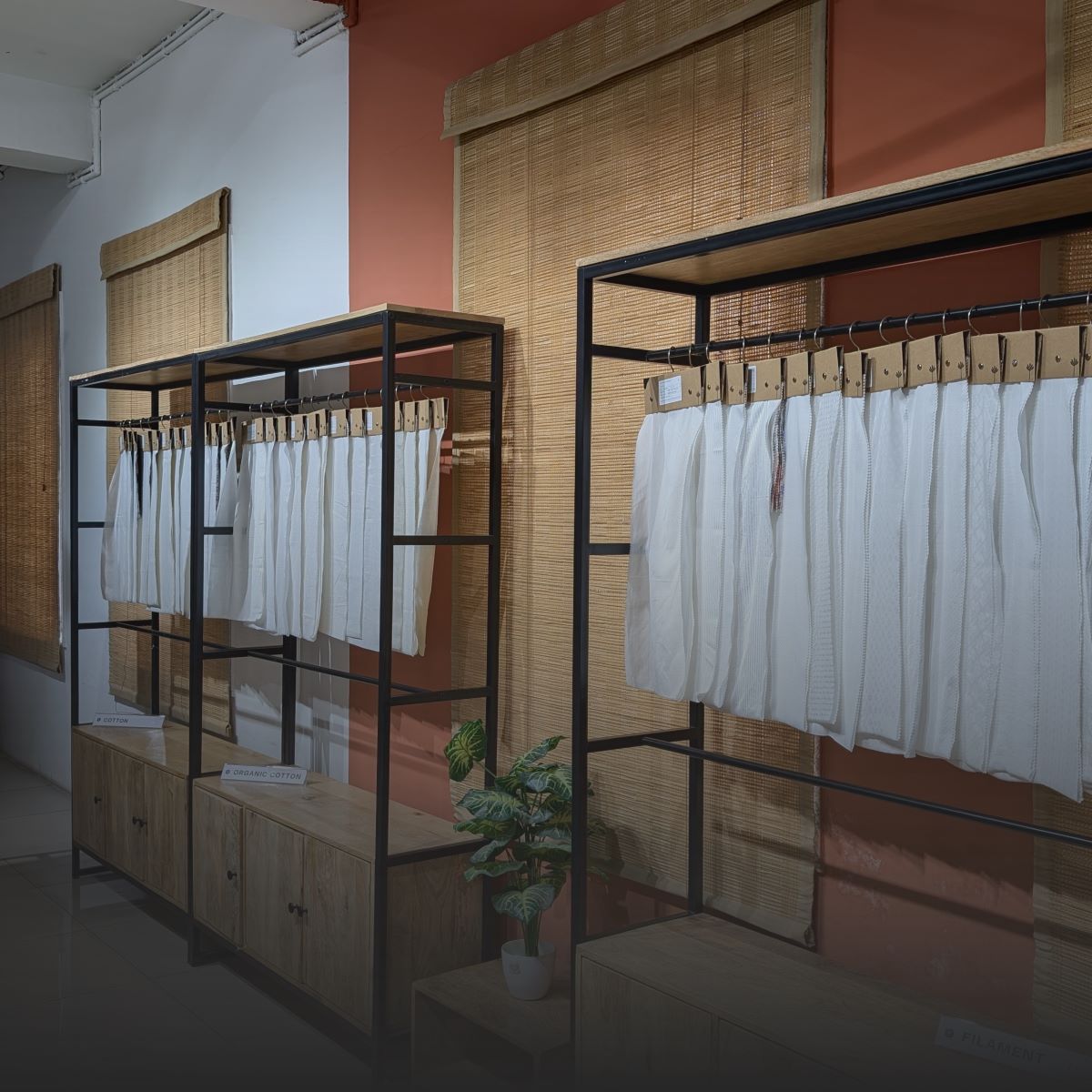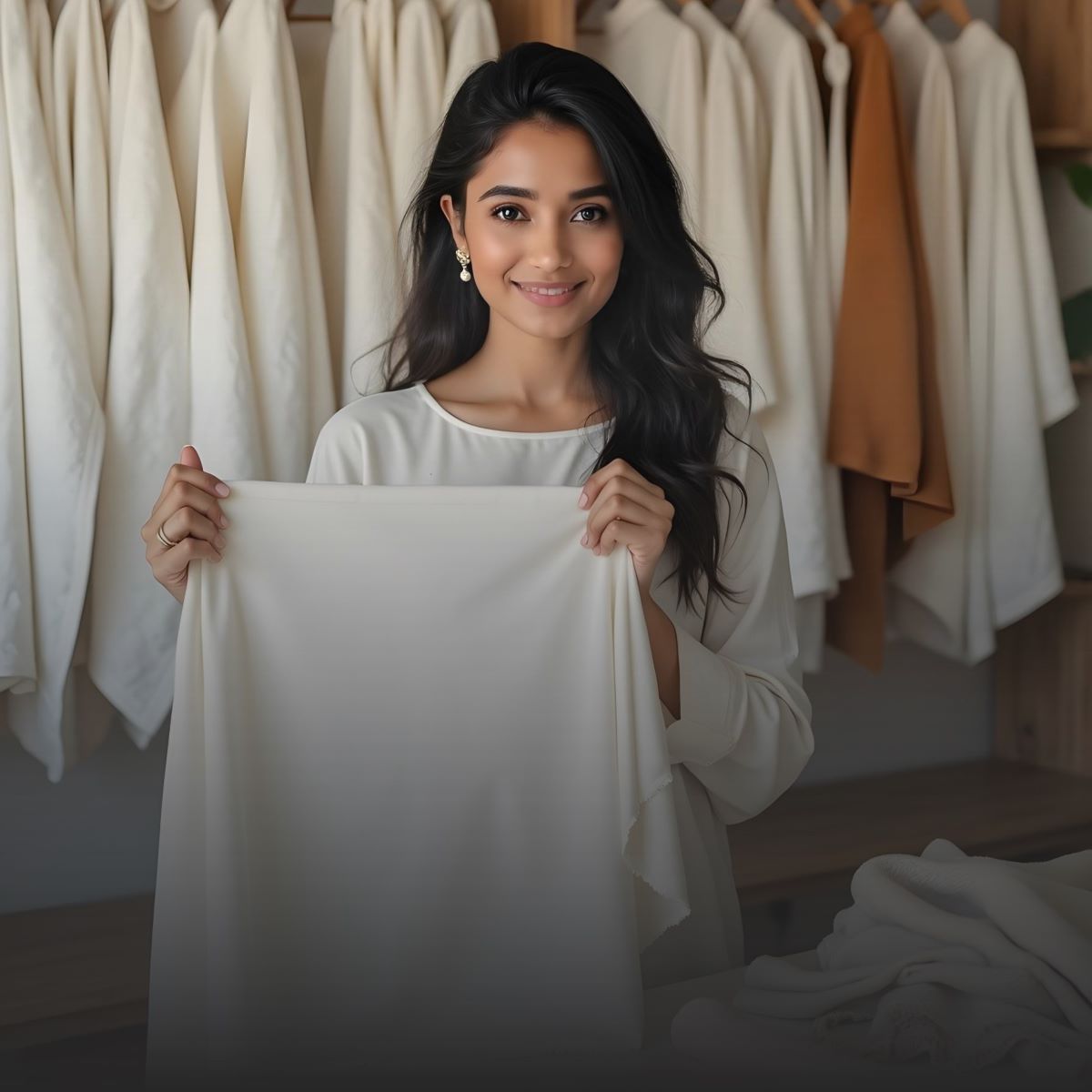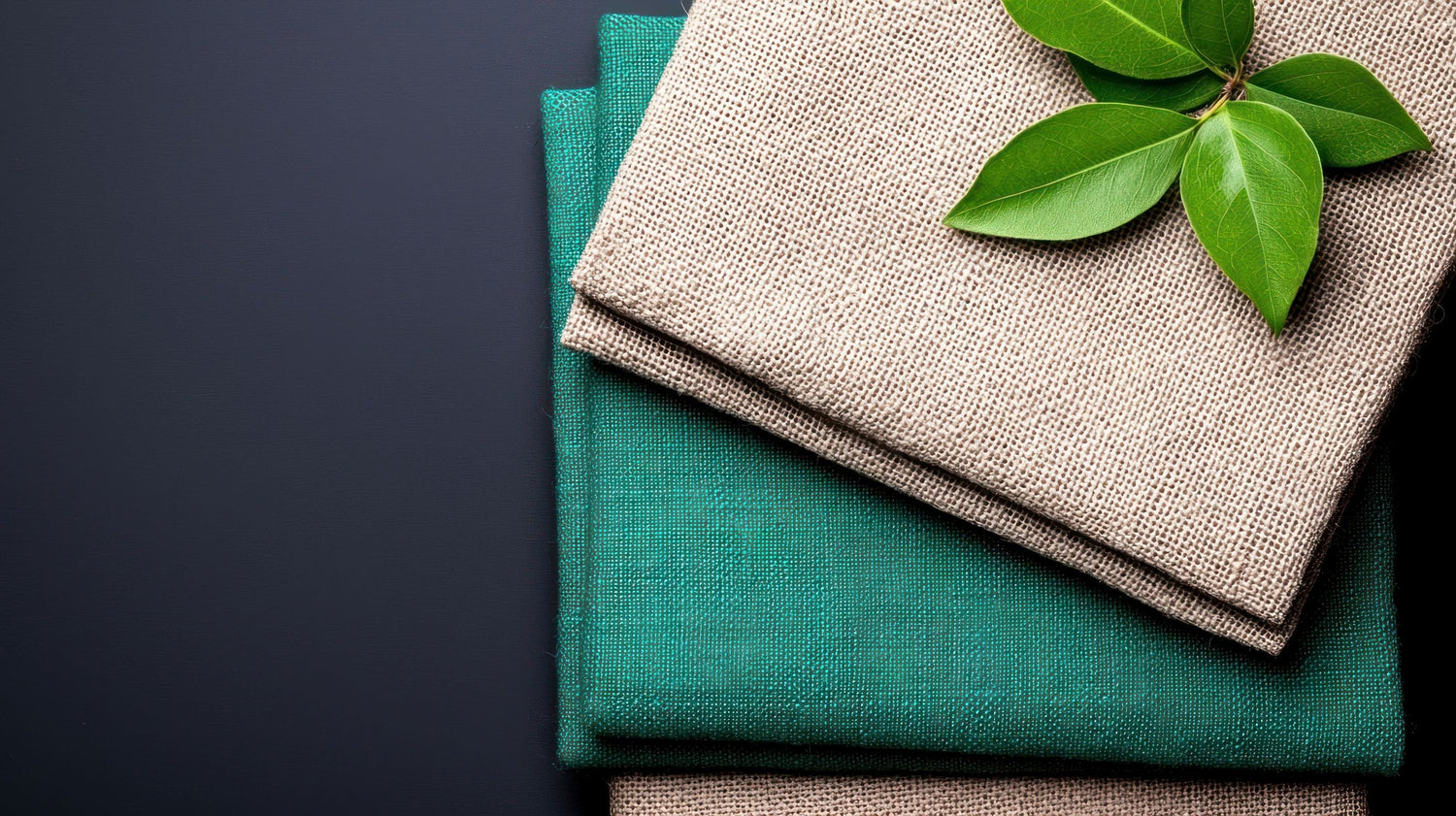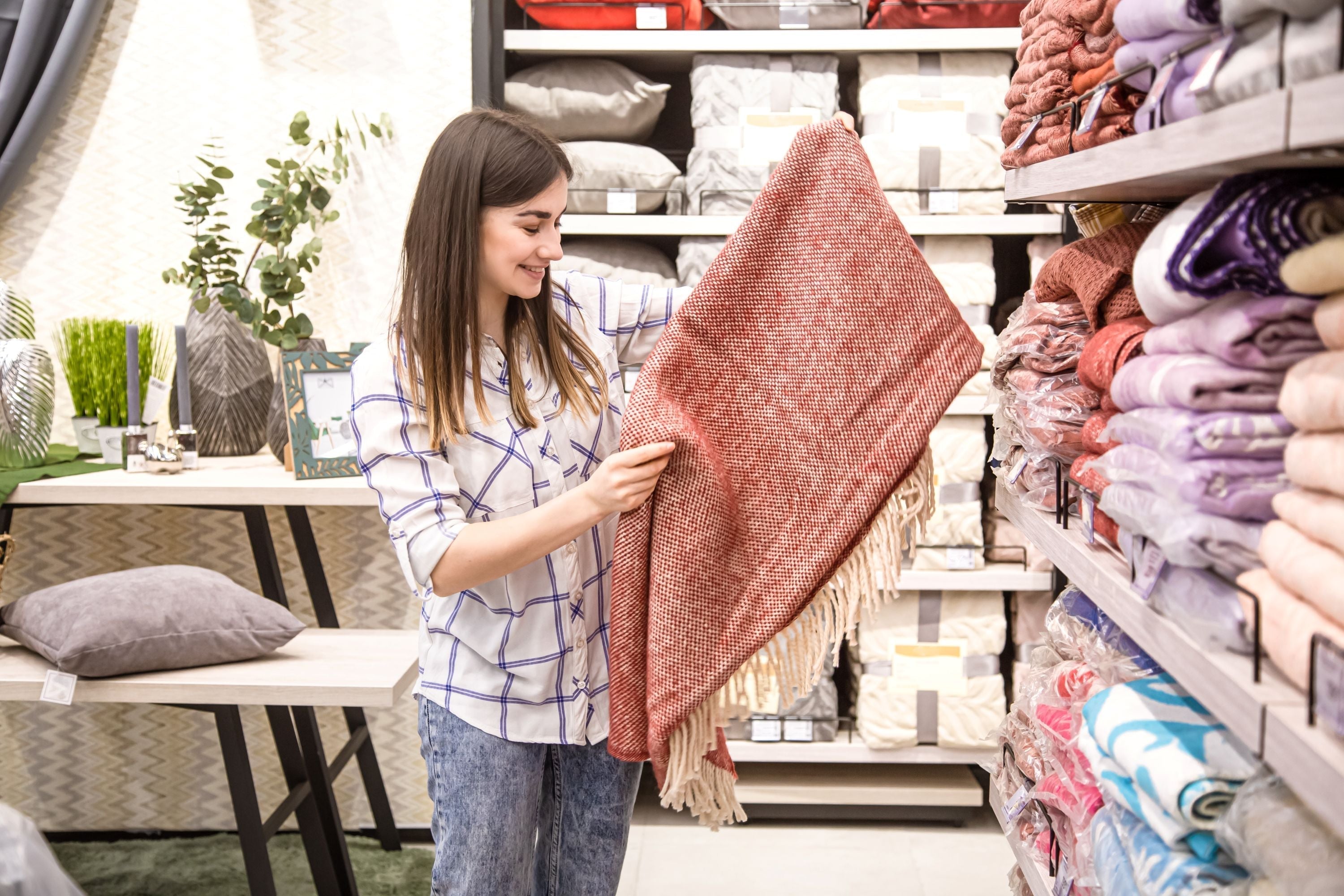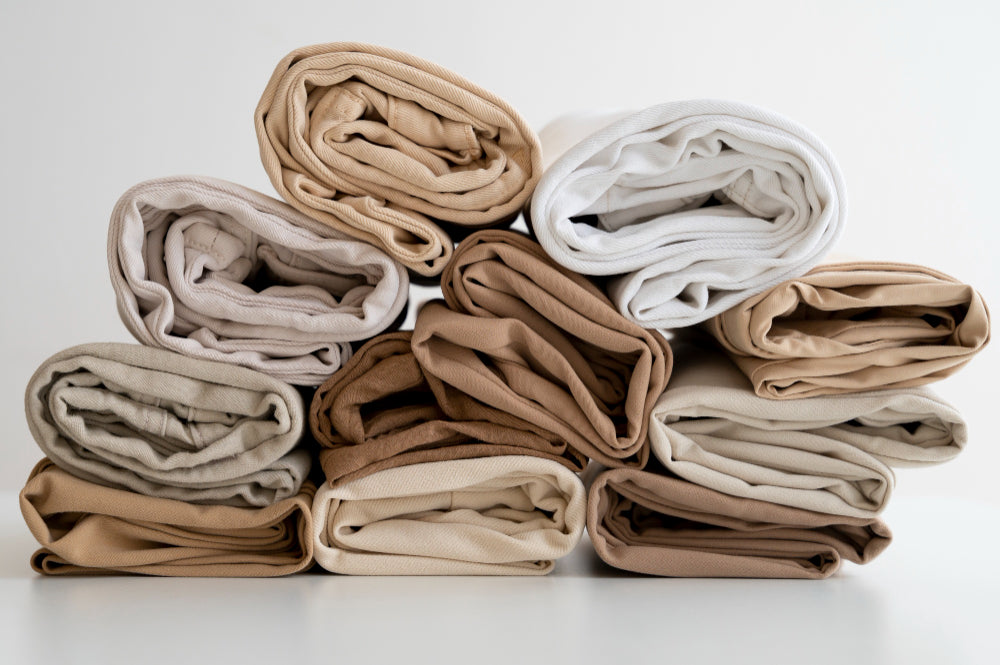Fashion is changing to be more eco-friendly, and Eastern Europe is becoming a major hub for new cloth ideas and fair production. A big change is happening in the area because of the EU Green Deal, new consumer habits, and more demand for organic cotton, sustainable fabric suppliers, as well as eco-friendly production.
This change offers global fashion brands and sourcing platforms like Fabriclore new opportunities for ethical sourcing, bulk fabric trade, and online wholesale fabric collaborations.
This article looks at key sustainable fabric trends shaping Eastern Europe's textile market in 2025, including policy changes, innovations, material developments, and sourcing options.
Key Sustainable Fabric Trends Reshaping Eastern Europe's Textile Industry In 2025
In 2025, Eastern Europe will be at the centre of a textile revolution driven by policy, new ideas, and consumer preferences. The emergence of organic natural cotton fabric, bulk fabric platforms, and low-MOQ suppliers, as well as eco-laws and digital sourcing tools, is rapidly transforming the area into a critical hub for modern and ethical textile sourcing. Let's take a look at the cloth market trends that are determining the future of this rapidly evolving industry.
I. Eu Textile Strategy And Its Impact On Sustainable Fabric Sourcing
The EU Strategy for Sustainable and Circular Textiles has a direct effect on the fabric industry in Eastern Europe. It sets big goals to cut down on textile trash and make the whole supply chain more sustainable.
Key Developments:
- Ecodesign Requirements: Because of new rules, materials must last a long time, be reused, and be recyclable.
- Digital Product Passports (DPP): Materials, suppliers, and carbon effects must be tracked by law.
- Extended Producer Responsibility (EPR): Brands are responsible for the whole lifecycle of fabrics, which includes recycling and collecting them.
- Ban on Wasteful Practices: It is now illegal to destroy clothes that haven't been sold.
These rules are changing how people source. Fabriclore is a modern fabric sourcing platform that is becoming more popular because it offers verified fabric data, certifications, and bulk fabric inventories that can be tracked.

II. Growing Demand For Organic And Natural Fabrics
In 2025, designers and brands that care about the environment are putting plant-based and non-toxic fibres at the top of their list. In Europe, this is making more people want organic natural cotton fabric, linen, hemp, and TENCEL™.
Why Organic and Natural Matter:
- Reduced chemical use and water waste in production.
- Skin-safe and biodegradable fabrics are preferred for conscious fashion.
- GOTS-certified organic cotton leads fabric categories in growth.
To help with this change, Fabriclore offers GOTS-certified ready-to-dye cotton, wholesale linen, and sustainable blends with low minimum order numbers. Platforms like Fabriclore make it possible to reliably source fabric on a large scale, whether you're looking for wholesale fabric by the yard or small samples.
IV. Digitalization And Innovation In Fabric Sourcing Platforms
Digital innovation is becoming the backbone of sustainable buying in Eastern Europe as the supply chain gets more complicated. From designing to sending out, digital solutions are changing how fabrics are found and kept track of.
Key Innovations:
- On-demand production to reduce overstock.
- QR code & blockchain traceability to combat greenwashing.
- AI-powered patterning to cut waste and speed production.
Buyers prefer digital-first platforms because they offer real-time availability, order tracking, digital samples, and access to more types of certified and customizable textiles through a single platform.
V. Sustainable Fabrics Market: Size, Growth & Scope
The sustainable fabrics market is growing all over the world, and Eastern Europe is a big part of that growth.
Industry Forecast:
- Market size is expected to grow from $36B in 2024 to $58B by 2031.
- Key drivers: eco-conscious brands, consumer awareness, and government regulations.
- Increased investment in fabric wholesale platforms with verified supply chains.
In response, sellers in Eastern Europe are offering wholesale fabric online, with compliance, openness, and low prices at the centre. Fabriclore, for example, has a carefully chosen catalogue of eco-friendly fabrics that can be digitally printed or dyed. This is great for brands that care about both style and the environment.

VI. Bulk Fabric Sourcing And Low MOQ Manufacturing In Eastern Europe
More and more fashion startups and small makers are looking for low MOQ (Minimum Order Quantity) suppliers for pilot collections and limited drops. The textile hubs in Eastern Europe are responding to this need.
Benefits of Sourcing from Eastern Europe:
- Faster lead times due to regional proximity.
- Smaller carbon footprint from reduced shipping distances.
- Flexible production capacities ideal for seasonal collections.
A lot of well-known Fabric Suppliers and platforms sell bulk fabric in amounts as low as 10 meters, which makes it easier to test and grow. Now more than ever, it's easy for brands to get wholesale linen, sustainable cotton, or custom printed fabric from Eastern Europe.
VII. Circular Economy And Textile Waste Management Trends
Over 12 million tonnes of textile trash are made every year in the EU, which is a record high. Eastern Europe is stepping up its efforts to deal with this problem in 2025 by coming up with new ways to recycle and aligning its policies.
Sustainable Waste Practices:
- Textile-to-textile recycling for pre-and post-consumer waste.
- Increased investment in fabric sorting and reuse infrastructure.
- Recycled fibre certifications as a buyer priority.
This trend is good for business and the environment. People who want to buy sustainable fabrics are looking for suppliers that use recycled yarns and have effective metrics that can be checked. Fabric Sourcing Platforms are adding recycled polyester, regenerated cotton, and mixes to their list of fabrics.
VIII. The Rise Of Digital Fabric Sourcing Platforms
Fashion brands can't use the old ways of getting fabrics anymore because the textile business is changing because of things like sustainability, transparency, and customization. Digital fabric-sourcing websites are now an important part of modern supply chains. They help companies find large amounts of fabric, keep track of quality, and follow rules across borders.
There are now several sites that meet this need by providing wholesale fabric online, fabric catalogues with full specifications, and full logistics. Companies want MOQ flexibility, a range of fabric types, and buying tools that can be used with technology. Global buyers are now looking for reliable fabric sellers who can help them with things like meeting deadlines, getting sustainability certifications, and getting samples.
Why Fabriclore Leads The Way In Sustainable Fabric Sourcing

Fabriclore has become one of the best fabric sourcing platforms for fashion designers, small brands, and big manufacturers all over the world, especially in high-demand places like Saudi Arabia, Europe, and Africa.
Here's What Sets Fabriclore Apart:
- Extensive Sustainable Fabric Collection
Fabriclore lets you choose from 300+ certified textiles, such as GOTS-certified organic cotton, TENCEL™, LENZING™, LIVA™, BEMBERG™ Cupro, hemp, bamboo, and recycled fabric blends. Their catalogue is put together to support ethical production, whether your brand is interested in natural or manufactured sustainable fabrics.
- Custom Printing Expertise with 10+ Years of Experience
Fabriclore specializes in digital, screen, and hand-block printing, which means they can take your fabric ideas and turn them into patterns that can be made. Their in-house design support makes sure that everything is done correctly, quickly, and with style, from mood boards to finished rolls.
- Versatile Fabric Options for All Use Cases
Choose from:
-
- RFD (Ready for Dyeing) and Greige fabric.
- Pre-dyed solids like mill-dyed, yarn-dyed, Schiffli, and denim.
- Made-to-order fabrics tailored to your custom print or dye.
- Ready stock of artisanal styles: Ikat, tweed, jacquard, screen prints.
- Global Reach With Low MOQ Flexibility
Fabriclore lets you place wholesale fabric orders starting at just 10 meters thanks to a combined mill-to-brand model. This is great for new businesses, samples, or niche collections. It ships all over the world, and countries like Saudi Arabia, Albania, Estonia, Kenya, and Trinidad & Tobago are fully supported, with all the necessary paperwork and delivery right to your door.
- Trusted By 400+ Private Labels
Over 400 brands trust Fabriclore for quality, honesty, and smooth execution. These brands range from small, eco-friendly labels to big production houses. Their customers like that they have reasonable prices, authenticity in fabric specs, and helpful service.
- Tech-Enabled Sourcing For Modern Brands
Fabriclore's online platform gives you real-time updates, digital swatches, and full visibility into the state of your order. Their backend makes sure that fabric testing, sampling, and accurate spec display, which includes showing thread count, weave, and weight, so brands can make smart choices about where to get their clothes.
Best for Startups, Private Labels & Sustainable Brands
Whether you're looking to:
- Launch a sustainable fashion brand.
- Build a custom collection for a retail label.
- Scale wholesale fabric sourcing without overstocking.
Fabriclore is a fully tech-powered sourcing service backed by 50+ certified Indian mills and designed for the conscious, fast-paced fashion world of today.
Explore sustainable options now:
🔗 Fabriclore's Sustainable Fabric Collection
The Future Of Textile Sourcing In Eastern Europe

Eastern Europe isn't just a place to make things anymore; it's also a forward-thinking place to source goods that combine sustainability, technology, and global market demand. How the market changes is affected by
- Sustainable practices are becoming mandatory.
- Digital sourcing platforms are replacing traditional bulk buying.
- Nearshoring and green logistics supporting EU-focused brands.
2025 is the year to join Eastern Europe's sustainable environment if you work with fabric wholesale, custom fashion production, or ethical textile sourcing. Sites like Fabriclore give you the tools you need to do it right.
Conclusion
Brands that value transparency, sustainability, and innovation are finding that Eastern Europe is a good place to source textiles. The fabric suppliers in the region are changing what responsible manufacturing means in 2025 because of EU rules, changing customer values, and better tools for sourcing.
Now is the time to work with partners like Fabriclore who are flexible, compliant, and ready for the future, whether you're looking for organic natural cotton fabric, wholesale linen or sustainable fabric suppliers for your next collection.
FAQs
1. What Are The Top Textile Trends Dominating Eastern Europe In 2025?
There is one big trend in the Eastern European textile business that stands out in 2025: the shift towards sustainable and traceable fabrics. Because of EU-wide laws on sustainability, fashion brands and manufacturers are putting an emphasis on digital product passports, eco-friendly sourcing platforms, and textiles that have a low effect. At record speed, the area is adopting greener design, circular systems, and fair cloth production.
Key trends include:
- Circular economy textile sourcing.
- Digital traceability and DPP (Digital Product Passport).
- Demand for sustainable fabric suppliers.
- Low MOQ and fast, flexible production.
2. Which Fabrics Are Most In Demand For Sustainable Fashion And Home Textiles?
In 2025, sustainability isn't just a trendy word; it's the basis for new clothing innovations. Brands and designers are looking for textiles that are not only good for the environment but also work well, are soft, and are affordable. Organic cotton, linen, hemp, TENCEL™, and recycled polyester are the materials that people want this year the most.
Most in-demand sustainable fabrics:
- GOTS-certified organic cotton.
- Breathable linen from European flax.
- Durable, fast-growing hemp.
- Plant-based TENCEL™ and modal.
- Recycled polyester (from post-consumer waste).
A lot of people use these fabrics for bulk fabric sourcing, everyday clothes, vacation wear, baby clothes, and eco-friendly home decor.
3. Why Are Brands And Designers Choosing Fabriclore For Sustainable Fabric Sourcing?
Want a reliable fabric sourcing platform that does everything? Fabriclore is becoming more and more popular among designers, startups, and private brands around the world, including those in Africa, Eastern Europe, and Saudi Arabia. This is because it offers a great mix of variety, affordability, and authenticity.
Fabriclore stands out for:
- Access to 300+ certified sustainable fabrics.
- Custom printing: digital, screen, hand block.
- Low MOQ (starting at just 10 meters)
- Global delivery & compliance-ready logistics
- In-house fabric swatches and testing support.
Fabriclore gives you full transparency and end-to-end service for sourcing, no matter if you're a small business or a big company.
4. Is Eastern Europe A Good Place For Sourcing Fabric In Bulk?
Of course! Eastern Europe is becoming a more flexible and important place for bulk fabric sourcing, especially for brands in the EU or close by that want to cut down on lead times and damage to the environment. Traditional craftsmanship and modern compliance can be found in the area, which is backed up by cutting-edge platforms and supplier networks.
Why Eastern Europe is ideal:
- Nearshoring advantage (shorter shipping, faster delivery).
- Flexible MOQ and scalable production.
- Access to circular design expertise.
- Integration with EU sustainability rules.
- A strong network of fabric suppliers and mills.
Businesses that buy wholesale linen, organic cotton, or recycled fabrics benefit from working with reliable local partners and having an easier time keeping up with regulations.
5. How Is Textile Waste And Recycling Handled In Eastern Europe Today?
If you care about being good to the earth, Eastern Europe is working hard to make its recycling system stronger. Countries like Poland, Romania, and the Czech Republic are growing their textile-to-textile recycling infrastructure in 2025. This is made possible by new EU laws that require waste to be collected and circular practices to be used.
Textile waste solutions gaining momentum:
- Textile-to-textile recycling for worn garments.
- Post-consumer and pre-consumer waste reuse.
- Sorting centres and chemical recycling tech.
- EPR schemes (brands responsible for end-of-life).
- Collaboration with fabric suppliers offering recycled yarns.
